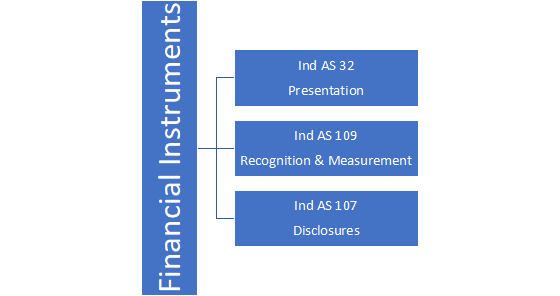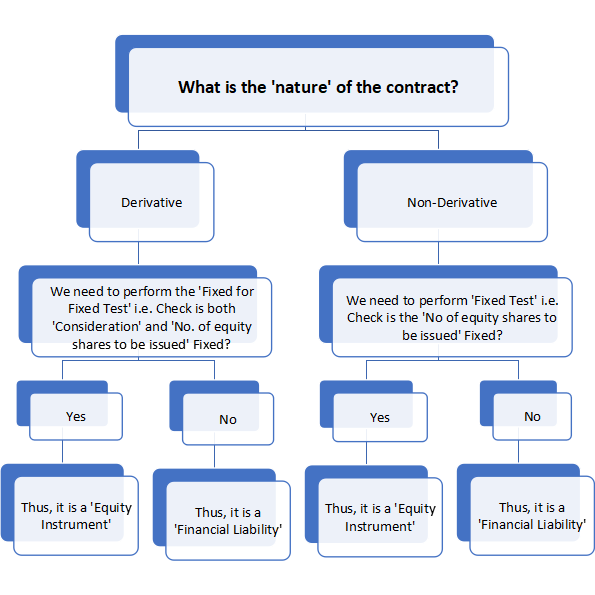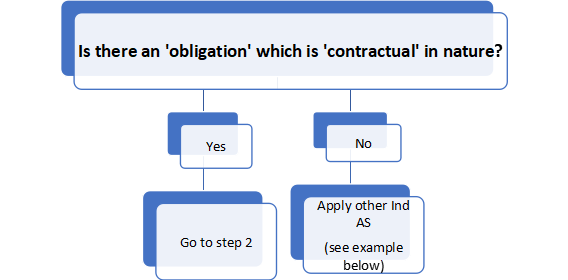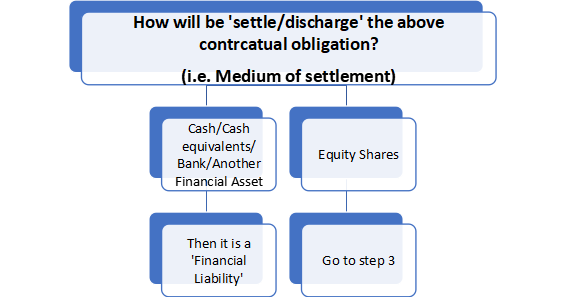Indian Accounting Standards (Ind AS) 32 Financial Instruments
- Blog|Account & Audit|
- 4 Min Read
- By Taxmann
- |
- Last Updated on 28 June, 2021

Let us first of all take up the definition of ‘Financial Instrument’ from Ind AS 32:
Paragraph 11 of Ind AS 32:
“A financial instrument is any contract that gives rise to a financial asset of one entity and a financial liability or equity instrument of another entity.” Looking at the above definition one thing is pretty clear that there has to be a ‘contract’. We all know that contract is always entered between 2 parties. So, which 2 parties are we referring to in this definition?
Another thing which one can interpret from the above definition is that the decision is to be taken by the issuer when it PRESENTS (emphasis added – Ind AS 32 deals with presentation) the instrument in the Balance Sheet. Thus, we can easily interpret the definition as under: When there is a contract between 2 parties (Issuer and Holder), the issuer needs to decide whether to present the instrument as a ‘Financial Liability’ (loan/debt funds) or ‘Equity Instrument’ (Own funds). The Holder would always land up calling it as a “Financial Asset’.
Thus, there are a total 3 terms with which we can appreciate the definition of ‘Financial instrument’.
1. Financial Liability 2. Equity Instrument 3. Financial Asset My experience has given me an understanding on the basis of which I have developed a 3-step criteria approach of identifying whether a given instrument is a ‘Financial Liability’ or ‘Equity Instrument’. Thus, without taking the definition of ‘Financial Liability’ or ‘Equity Instrument’ let me elaborate the 3-step criteria with examples. Step 1:
Example: Income tax is payable to government. But this is a obligation which is ‘statutory’ in nature. Thus, Ind AS 12 applies. Step 2:
Note: I am not discussing the case where the contractual obligation will be discharged in a combination of cash and equity shares. Step 3: 
Examine the nature of the financial instrument?
At the first instance I would like to mention that this instrument is a case of ‘mandatory conversion’ thus, it is non-derivative in nature.
Step 1: Is there an obligation which is contractual in nature for C Ltd.? Yes.
Step 2: How will C Ltd. settle/discharge the above obligation? Equity Shares.
Step 3: What is the nature of contract? Non-derivative. Therefore, we need to apply ‘Fixed Test’ i.e. No of shares to be issued is fixed or variable. C Ltd. uses a variable number of its own equity instruments as a means to settle the contract.
Conclusion: Financial Liability.
Example 2: C Ltd. issues convertible debentures to J Ltd. for a subscription amount of Rs. 100 crores. Those debentures are convertible after 5 years into 15 crore equity shares of Rs. 10 each.
Examine the nature of the financial instrument?
At the first instance I would like to mention that this instrument is a case of ‘mandatory conversion’ thus, it is non-derivative in nature.
Step 1: Is there an obligation which is contractual in nature for C Ltd.? Yes.
Step 2: How will C Ltd. settle/discharge the above obligation? Equity Shares.
Step 3: What is the nature of contract? Non-derivative. Therefore, we need to apply ‘Fixed Test’ i.e. No of shares to be issued is fixed or variable. C Ltd. uses a fixed number of its own equity instruments as a means to settle the contract.
Conclusion: Equity Instrument.
Example 3: B Ltd. issues warrants (emphasis added) to all existing shareholders entitling them to purchase additional equity shares of A Ltd. (with face value of Rs. 100 per share) at an issue price of Rs. 150 per share.
Evaluate the nature of financial instrument? At the first instance I would like to mention that this instrument is a case of an ‘option’ where the shareholder gets an option to buy shares. Thus, it is derivative in nature.
Step 1: Is there an obligation which is contractual in nature for B Ltd.? Yes.
Step 2: How will B Ltd. settle/discharge the above obligation? Equity Shares.
Step 3: What is the nature of contract? Derivative. Therefore, we need to apply ‘Fixed for Fixed Test’ i.e. Both ‘Consideration’ and ‘No of shares’ to be issued is fixed. Consideration is fixed at Rs. 150; No. of Equity shares to be issued = 1; i.e. fixed.
Conclusion: Equity Instrument.
Author: CA. Kapileshwar Bhalla
Also Read:
Disclaimer: The content/information published on the website is only for general information of the user and shall not be construed as legal advice. While the Taxmann has exercised reasonable efforts to ensure the veracity of information/content published, Taxmann shall be under no liability in any manner whatsoever for incorrect information, if any.

Taxmann Publications has a dedicated in-house Research & Editorial Team. This team consists of a team of Chartered Accountants, Company Secretaries, and Lawyers. This team works under the guidance and supervision of editor-in-chief Mr Rakesh Bhargava.
The Research and Editorial Team is responsible for developing reliable and accurate content for the readers. The team follows the six-sigma approach to achieve the benchmark of zero error in its publications and research platforms. The team ensures that the following publication guidelines are thoroughly followed while developing the content:
- The statutory material is obtained only from the authorized and reliable sources
- All the latest developments in the judicial and legislative fields are covered
- Prepare the analytical write-ups on current, controversial, and important issues to help the readers to understand the concept and its implications
- Every content published by Taxmann is complete, accurate and lucid
- All evidence-based statements are supported with proper reference to Section, Circular No., Notification No. or citations
- The golden rules of grammar, style and consistency are thoroughly followed
- Font and size that’s easy to read and remain consistent across all imprint and digital publications are applied








 CA | CS | CMA
CA | CS | CMA



Comments are closed.